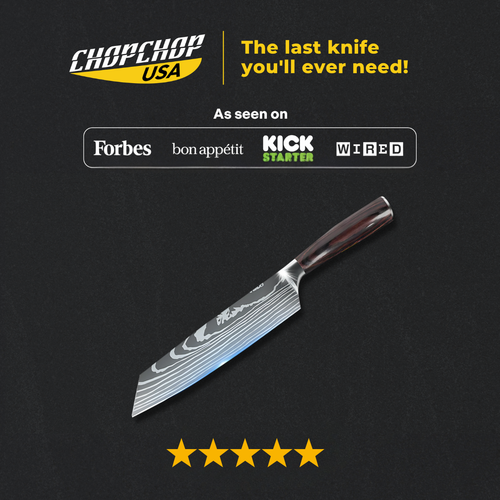What are the best oils for stainless steel cooking? The short answer: oils with high smoke points, stable fats, and flavors that complement your dishes. In this guide, ChopChop USA explores the top oils for frying, searing, and everyday cooking—along with three you should avoid. Whether you’re aiming for healthier meals or longer-lasting cookware, this guide helps you make the best oil choices in your kitchen.
What Makes an Oil “Good” or “Bad” for Stainless Steel?

Not every cooking oil works well with stainless steel. The difference often comes down to how oils behave under heat, their flavor, and their health profile. Some oils stay stable and enhance your food, while others burn quickly, leaving behind smoke, bitterness, and sticky residue.
Smoke Point Matters
Cooking with stainless steel requires oils that won’t burn, smoke, or leave sticky residues. The key factor is the smoke point—the temperature at which oil begins to break down and release harmful compounds. Oils with higher smoke points (400°F and above) are best for frying, searing, and roasting because they remain stable under high heat.
Flavor Profile
Not all oils taste the same. Neutral oils like avocado, sunflower, and canola are versatile for everyday cooking, while flavorful oils such as extra virgin olive or peanut oil are better for specific dishes. The right oil should complement your food instead of overpowering it.
Health Benefits
Nutritional value is another important factor. Oils rich in monounsaturated and polyunsaturated fats—like olive and avocado oils—are heart-healthy and less processed. By contrast, heavily refined or hydrogenated oils may contain harmful trans fats.
Why Some Oils Are “Bad”
Low-smoke-point oils such as flaxseed and walnut oil are unsuitable for high-heat cooking. They oxidize quickly, producing bitter flavors and unhealthy compounds. Flavored or infused oils (garlic, chili, herb) also burn easily, leaving residue on stainless steel pans.
In short, the best oils for stainless steel are heat-stable, versatile, and health-friendly. Choosing the right one improves flavor, protects your cookware, and supports better nutrition.
Cooking Oil Smoke Point Table
| Type of Oil | Smoke Point (°F) |
|---|---|
| Avocado oil, refined | 520 |
| Canola oil, refined | 400 |
| Coconut oil | 350 |
| Extra virgin olive oil | 410 |
| Flaxseed oil, refined | 225 |
| Palm oil | 450 |
| Peanut oil, unrefined | 450 |
| Regular olive oil | 468 |
| Safflower oil | 510 |
| Soybean oil | 450 |
| Walnut oil, unrefined | 320 |
Cooking Methods & Temperature Guide
| Cooking Method | Temperature (°F) |
|---|---|
| Dressing or drizzling | Room temperature |
| Baking | 300–375 |
| Sautéing | 250–350 |
| Frying | 375 |
| Grilling | 400–500 |
| Roasting | 425 |
7 Best Oils for Stainless Steel Cooking
When cooking on stainless steel, the right oil keeps food from sticking, prevents burnt flavors, and ensures healthier meals. Here are seven of the best oils to use.
Avocado Oil (Refined) - Best Oils for Stainless Steel Cooking

With a smoke point of 520°F, avocado oil is one of the most heat-stable options. It has a mild, neutral flavor, making it excellent for searing, roasting, or grilling. Packed with monounsaturated fats and vitamin E, it’s a heart-healthy choice that works for almost any recipe.
Peanut Oil (Unrefined) - Best Oils for Stainless Steel Cooking

Peanut oil holds up well to high-heat cooking with a smoke point of 450°F. Its light nutty flavor adds depth to stir-fries, Asian dishes, and fried foods. Because it’s stable at high heat, it’s perfect for stainless steel frying and sautéing without leaving sticky residue.
Regular Olive Oil - Best Oils for Stainless Steel Cooking

Refined or “light” olive oil has a smoke point of 468°F, making it far more heat-resistant than extra virgin olive oil. It’s versatile, suitable for roasting, sautéing, and pan-frying. Alongside its cooking benefits, it provides heart-healthy antioxidants and healthy fats.
Extra Virgin Olive Oil (EVOO) - Best Oils for Stainless Steel Cooking

Although EVOO’s smoke point is around 410°F, it can still be used for medium-heat sautéing on stainless steel. Its robust flavor makes it perfect for Mediterranean dishes, pasta sauces, and finishing drizzles. It’s also loaded with antioxidants and healthy fats.
Canola Oil (Refined) - Best Oils for Stainless Steel Cooking

Affordable and neutral-tasting, canola oil has a smoke point of 400°F. It works well for everyday cooking, from pan-frying to baking. It’s a budget-friendly option for families who want a versatile oil for multiple cooking styles.
Sunflower (or Safflower) Oil - Best Oils for Stainless Steel Cooking

With smoke points ranging from 450–510°F, sunflower and safflower oils are excellent choices for stainless steel searing and frying. They have a light, neutral flavor that won’t overpower dishes, making them ideal for versatile, high-heat cooking.
Coconut Oil (Refined) - Best Oils for Stainless Steel Cooking

Refined coconut oil has a moderate smoke point of 350°F, which makes it best for baking or medium-heat sautéing. It adds a subtle coconut aroma and contains medium-chain triglycerides (MCTs), which may boost energy and metabolism.
3 Worst Oils for Stainless Steel Cooking
While many oils perform well on stainless steel, some are not suited for high-heat cooking. They either burn too quickly or produce unhealthy compounds when overheated. Here are three oils to avoid.
Flaxseed Oil
With a smoke point of just 225°F, flaxseed oil breaks down almost instantly under heat. It oxidizes quickly, producing a bitter taste and harmful compounds. While nutritious raw, it’s best reserved for salad dressings and cold applications—not stainless steel cooking.
Walnut Oil (Unrefined)
Unrefined walnut oil has a low smoke point of 320°F, making it unsuitable for frying, sautéing, or roasting. It’s highly delicate and turns bitter when heated. Use it only as a finishing oil for salads, pasta, or dips.
Flavored or Infused Oils
Garlic, chili, or herb-infused oils may add flavor, but they burn far faster than pure oils because of added solids. On stainless steel pans, they can smoke, stick, and leave burnt residues. Use them only as finishing touches after cooking.
4 Cooking Tips for Stainless Steel & Oils

Cooking on stainless steel pans can feel intimidating, but with the right approach, it becomes second nature. Here are four tips to get the most out of your oils and pans:
Preheat Your Pan Properly
Stainless steel needs to be heated before adding oil. A simple trick is the “water drop test”: flick a drop of water on the pan—if it dances and evaporates, the pan is ready.
Add Oil After Preheating
Always add oil once the pan is hot. This creates a temporary non-stick surface and prevents food from sticking. Cold oil in a cold pan often leads to uneven cooking.
Match Oil to Cooking Method
Choose oils with smoke points above the temperature of your cooking method. For example, avocado oil for searing, regular olive oil for roasting, and coconut oil for sautéing. Using the wrong oil may cause smoking and off-flavors.
Clean and Maintain Your Pans
After cooking, let the pan cool slightly before washing. Avoid harsh scrubbing that may damage the finish. A well-maintained stainless steel pan, paired with the right oil, can last a lifetime.
By following these tips, you’ll not only improve your cooking results but also extend the life of both your oils and cookware.
You can also read:
- How to Season Stainless Steel Pans?
- How to Clean Stainless Steel Pans So They Last For Years
- How Long Do Stainless Steel Pans Last? (When to Replace)
Introduce ChopChop USA Kitchen Essentials
ChopChop USA designs cookware that blends durability, performance, and convenience—helping you cook healthier while reducing waste. Here are two of our standout frying pans that pair perfectly with the oils recommended in this guide.
ChopChop USA Stainless Steel Frying Pan

Built for serious home chefs, the ChopChop USA Stainless Steel Frying Pan offers exceptional heat distribution and long-lasting durability. Its stainless steel construction makes it ideal for searing, sautéing, and browning, delivering consistent results every time.
Unlike coated pans, this stainless steel surface can handle higher heat, making it a versatile choice for everyday cooking. With proper care, this pan can last for decades, making it a sustainable investment for your kitchen. This pan is highly-rated as one of the Best Stainless Steel Skillets 2025.
ChopChop USA Hybrid Nonstick Frying Pan

The ChopChop USA Hybrid Nonstick Frying Pan gives you the best of both worlds—stainless steel strength combined with a smooth nonstick layer for effortless cooking. It heats evenly, allows for precise temperature control, and makes cleanup quick and easy.
Perfect for eggs, fish, and delicate foods that tend to stick, this pan reduces the need for excess oil while still offering the durability of stainless steel. Designed for everyday use, it’s a modern upgrade that balances convenience with long-term performance. This pan is rated as one of the Best Non Stick Frying Pans 2025.
Read more:
- Top Reasons to Invest in High-Quality Cookware
- Frying Pan Sizes: What Is the Best Size for a Stainless Steel Pan?
- 3 Ply vs. 5 Ply Stainless Steel Cookware – Which is Better?
- Are Scratches on Stainless Steel Pans Safe?
Conclusion
Choosing the right oil for stainless steel cooking is all about balance—heat stability, flavor, and health benefits. High-smoke-point oils like avocado, peanut, and refined olive oil make stainless steel pans shine by preventing sticking and burning, while low-smoke-point oils like flaxseed and walnut are better reserved for cold dishes.
By matching your oil to the cooking method and pan type, you’ll create tastier meals, protect your cookware, and make healthier choices in the kitchen.
For more amazing recipes, follow me on Facebook and Instagram! If you have any questions about ChopChop USA's products or promotions, please feel free to contact us at support@chopchopusa.com. Our dedicated team is available 24/7 and always happy to assist you.
Frequently Asked Questions
1. What is the best overall oil for stainless steel pans?
Avocado oil (refined) is often considered the best overall due to its very high smoke point (520°F), neutral flavor, and health benefits.
2. Can I use butter on stainless steel pans?
Butter has a low smoke point, so it burns easily on stainless steel. It’s better for finishing dishes or using alongside a high-smoke-point oil for flavor.
3. Why does food stick to my stainless steel pan even with oil?
Food sticks when the pan isn’t properly preheated. Always heat the pan first, then add oil, and only add food once the oil shimmers.
4. Are flavored or infused oils safe for high-heat cooking?
No—flavored oils burn quickly because of added herbs or spices. Use them as finishing oils after cooking.
5. Which oils should I avoid for stainless steel cooking?
Avoid low-smoke-point oils like flaxseed, walnut, and unrefined flavored oils. They oxidize, burn quickly, and can leave sticky residues on stainless steel.




